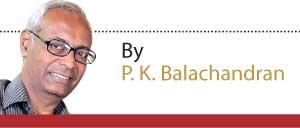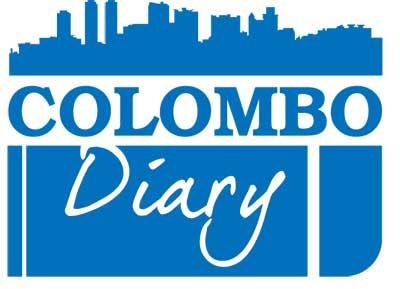10 Oct 2023 - {{hitsCtrl.values.hits}}
Sri Lanka’s Eastern Province is again becoming a contested region between ethnic groups. This time round it is more between the Tamils and Sinhalese, with the Muslims in the periphery.
more between the Tamils and Sinhalese, with the Muslims in the periphery.
This is because of the change in the balance of power between the three communities after the end of the war in May 2009.
When the war was raging, the LTTE had dominance and the contestation was between the Tamils and the Muslims over land. After the defeat of the LTTE, the balance of power shifted in favour of the Sinhalese and the Sinhalese-dominated State apparatus. The contestation is again over land, more typically, the historical title to land.
The Tamils consider the Eastern Province as their ‘Homeland’ with a hoary past marked by continuous settlement. They demand devolution of power in matters of land and law and order. The Sinhalese challenge these claims, also on historical grounds and a desire to expand territorially to reclaim their ‘lost’ rights.
In the early years of independence, the Sinhalese had claimed land in the Eastern Province through Government-sponsored settlement schemes. But now, lands are being appropriated by the various Government Departments for development, archaeology and forest preservation.
The Buddhist monks have jumped into the fray by claiming lands for temples on the ground that these lands once housed Buddhist temples.
The Archaeology Department, strengthened by a Presidential Task Force and under the direction of the Buddha Sasana Ministry, is conducting excavations to discover ancient Buddhist temples. Buddhist monks are building temples to lay claim to lands.
 The State, the Buddhist clergy and the Sinhalese majority see this as a legitimate endeavour also because no community can mark off any area of the island as an exclusive communal preserve.
The State, the Buddhist clergy and the Sinhalese majority see this as a legitimate endeavour also because no community can mark off any area of the island as an exclusive communal preserve.
They point out that there is no bar on Tamils buying land in Sinhalese-majority areas on the island. On the Tamils’ objection to the building of Buddhist temples in Tamil-majority areas, the Sinhalese point out that Hindu temples abound in Sinhalese-majority areas.
The Tamils on the other hand, see a sinister design in acquiring lands in the Tamil-majority areas. It is a move to change the ethnic distribution with the ultimate aim of making the Tamils a minority in the Eastern province, thereby knocking the bottom out of the Tamil case that the Eastern Province is their ‘Homeland’.
Tamils never tire of pointing out how, over the years, their proportion in the Eastern districts have been waning and the Sinhalese proportions are waxing
Tamils also fear a comprehensive loss of power on the island as a whole. They ask for provincial autonomy because they cannot share power at the Centre meaningfully given their permanent minority status. It is pointed out that they will always be a small minority in Parliament given Sri Lanka’s population distribution.
On the issue of the building of Buddhist temples in the Tamil-majority areas, the Tamils’ case is that the building activity is not motivated by piety but by an agenda to claim and seize the land around the new shrines with the help of government departments and the police.
The Tamils argue that there is no rationale for building Buddhist temples where there are hardly any Buddhists and point out that, in contrast, no Hindu temple is built where there are no Hindus.
Recently, The Hindu newspaper reported an issue in which Sinhalese Buddhists had built a stupa near the Aadi Aiyanar temple in Kurunthurmalai in the Mullaithivu District with the help of the Department of Archaeology; and the Sri Lanka Army and Civil Security Force for the “excavation and conservation.”
It is pointed out that Sri Lankan archaeology is not communally neutral as the Department of Archaeology functions under the Ministry of Buddha Sasana.
The Presidential Task Force on Preserving Archaeological Evidence in the Eastern Province set up by President Gotabaya Rajapaksa had no non-Buddhists and was put under the Defence Ministry to boot.
The report in The Hindu said that in the three years since the Task Force panel was set up, at least 23 new Buddhist shrines had come up in Kuchchaveli in Trincomalee District, in villages where Sinhalese constituted roughly 1% of the population, as per official sources.
President Ranil Wickremesinghe forbade Buddhist monks from ordering or carrying out archaeological excavations and to leave that to the Archaeology Department. But as pointed out earlier, the Archaeology Department is under the Ministry of the Buddha Sasana.
According to Fr. Rajan Rohaan of the Church Commission for Peace and Justice, there have been increasing instances where Buddhist monks have entered either state land or lands given to religious institutions and intimidated the occupants, expelling them from their properties and erecting new boundaries.
According to Fr. Rohaan, historically, land in the Eastern Province has been allocated on ethnicity basis. Lands are identified as either Tamil, Muslim or Sinhalese and allotted accordingly.
Historical evidence is used both by the Sinhalese and the Tamils to make contradictory claims to spaces.
It is not known when the Tamils first settled in Sri Lanka, but reputed historians agree that South Indian invasions from the First century BC to the 13th century AD resulted in Tamil migration.
By the 11th and 12th centuries, the upper half of the eastern province had a large Tamil community even as per the Kokila Sandesa as the Mukkara Hatana.
The Tamils consider the Saivite temples in the Eastern Province to be very ancient. For example, the Koneswaram Temple in Trincomalee is dated variously between 1580 BC and 205 BC.
On the other hand, the Sinhalese claim that Trincomalee is actually the ancient Sinhalese port of Gokarna.
According to one source, the conversion of Gokarna to Tirukonamalai (Trincomalee) first appears in a Tamil inscription ascribed to the 10th or the 11th century A.D. The Buddhist Vihara at Gokarna called Sri Gokarna Vihara was built in the reign of King Mahasen (276-303 A.D).
However, many renowned scholars say that it would be inaccurate to claim that only Sinhalese could be Buddhists and that all Buddhist archaeological remains necessarily indicate a Sinhalese connection.
Dr. Nirmala Chandrahasan recalls that during Pallava rule in South India (400-650 A.D) Buddhism flourished there. The Chinese monk scholar Huan Tsang, who visited Kanchipuram in the 7th century AD, states that most of its population was Buddhist, with about 100 monasteries and thousands of monks, including monks from Sri Lanka.
Kanchipuram was also the native city of Dharmapala, the Rector of the famed Nalanda Buddhist University. During the Chola period from the mid-9th century to the early 13th century in Tamil Nadu Buddhism was prevalent there.
The Mahavamsa mentions that in the 13th Century, King Parakramabahu of Dambedeniya got down monks and scriptures from the Chola (Tamil) country to revive Buddhism in Sri Lanka. Chief among these monks was Dhammakitti, who wrote the continuation of the Mahavamsa from the time of King Srimevan up to his time.
Among the learned Tamil Buddhist monks who came to Sri Lanka were Ven. Bhuddhadatta, Ven. Buddhagosha and Ven. Dharmapala. They lived and wrote their works such as the Visudhimagga at the Mahavihara in Anuradhapura.
However, this syncretic past has been forgotten or has been deliberately ignored by the Sinhalese Buddhists as well as the Tamil Hindus. In the present political context, zealots from both communities want to stress their ethnic and religious separateness rather than the common elements which bind them.
The objective is to make claims either to establish exclusivist ghettos or to establish ethnic cum religious hegemony.
Among the Sinhalese, the fear of Tamil consolidation in one area evokes fears of secession because the only place in the world that the Sinhalese are native to is the island of Sri Lanka.
But for the Tamils, the loss of their traditional lands and the dilution of their proportion there amount to denying them a place they can legitimately call their Homeland.
This conflict appears to be insolvable in the absence of an overarching political and moral leadership that can bridge the two.
27 Dec 2024 17 minute ago
27 Dec 2024 29 minute ago
27 Dec 2024 33 minute ago
27 Dec 2024 37 minute ago
26 Dec 2024 26 Dec 2024